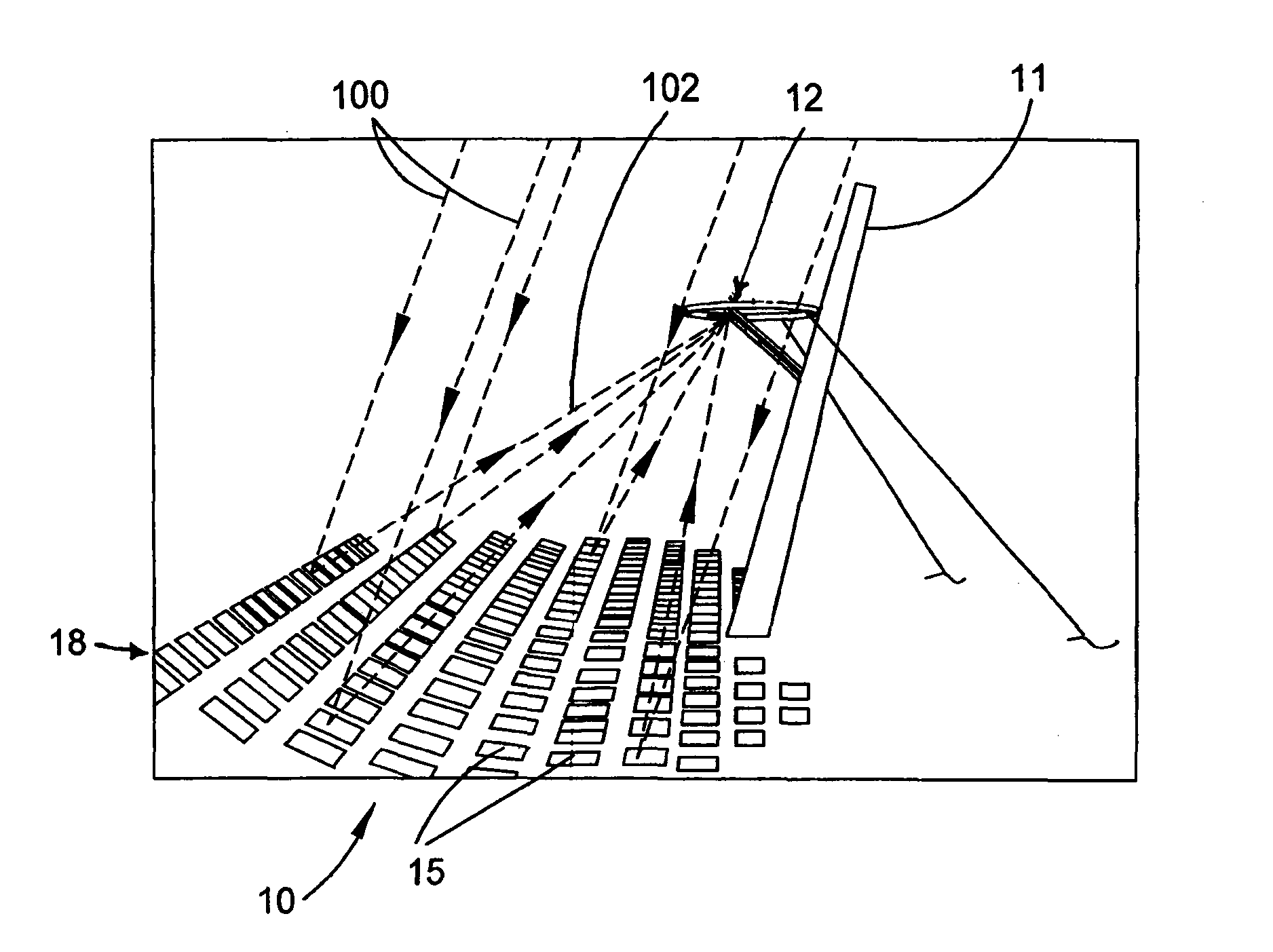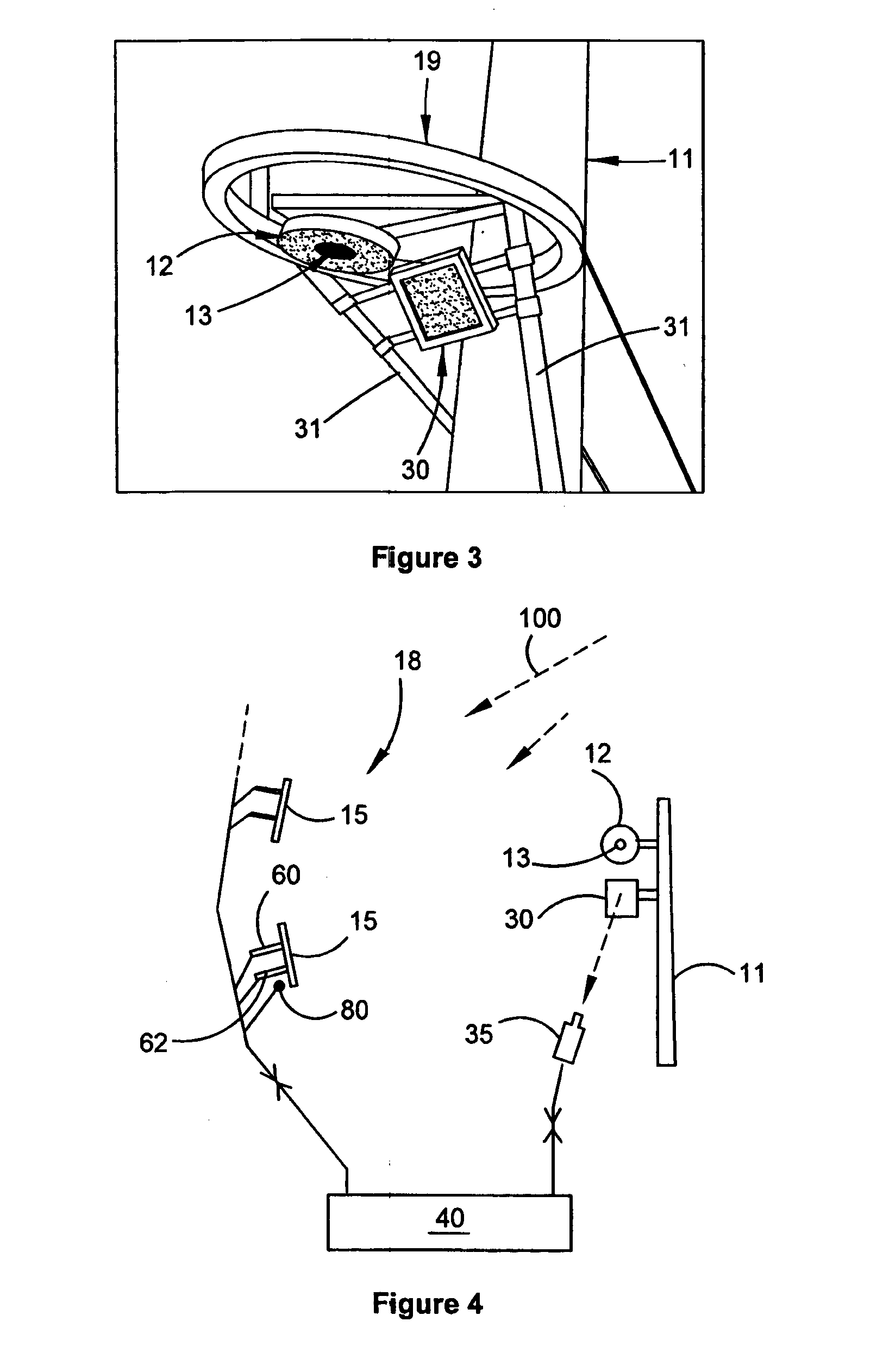Heliostat calibration and control
a technology of heliostats and calibration methods, applied in the field of solar energy collection apparatuses, can solve the problems of inability to address the calibration of inexpensive and inaccurate heliostats, and the magnitude of misalignment is relatively large before corrective action, so as to improve the accuracy of its receipt
- Summary
- Abstract
- Description
- Claims
- Application Information
AI Technical Summary
Benefits of technology
Problems solved by technology
Method used
Image
Examples
Embodiment Construction
[0070]The present invention has particular utility in the operation of a central receiver solar energy collection system utilising inexpensively manufactured heliostats. Such a system 10 is depicted in FIGS. 1 and 2. The system comprises a central solar energy receiver 12 mounted in cantilevered fashion from a tower 11 above and in front of a large array or field 18 of heliostats 15. Heliostats 15 are mounted for angular adjustment to optimally receive a respective beam of sunlight 100 and to direct the beam, as a directed beam 102, to the solar receiver 12. Receiver 12 has an aperture 13 (FIG. 3) that defines a primary target to receive the directed beams of sunlight from the heliostats.
[0071]An optimally receiving position in this context is the angular position of the heliostat determined by a central controller, discussed further below, to be the appropriate position at the particular time on the particular date at which the respective heliostat makes a desired contribution to t...
PUM
 Login to View More
Login to View More Abstract
Description
Claims
Application Information
 Login to View More
Login to View More - R&D
- Intellectual Property
- Life Sciences
- Materials
- Tech Scout
- Unparalleled Data Quality
- Higher Quality Content
- 60% Fewer Hallucinations
Browse by: Latest US Patents, China's latest patents, Technical Efficacy Thesaurus, Application Domain, Technology Topic, Popular Technical Reports.
© 2025 PatSnap. All rights reserved.Legal|Privacy policy|Modern Slavery Act Transparency Statement|Sitemap|About US| Contact US: help@patsnap.com



